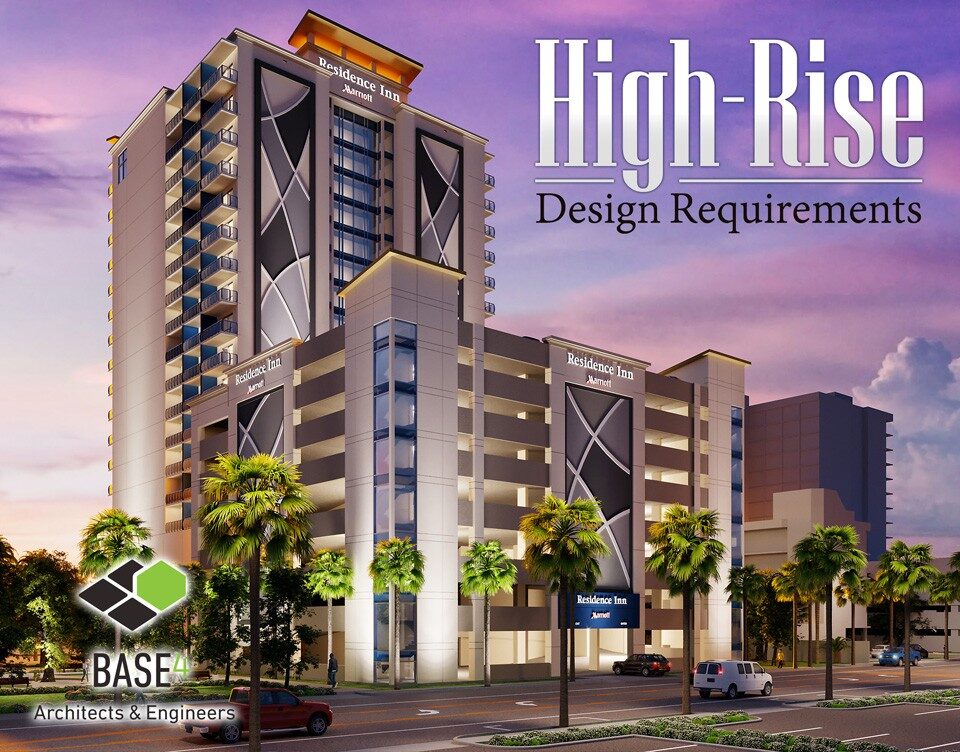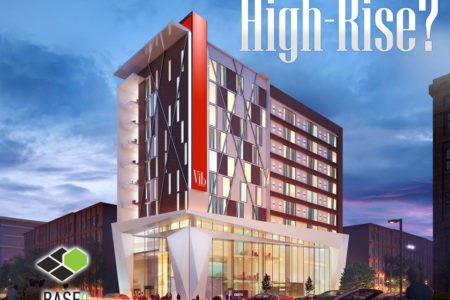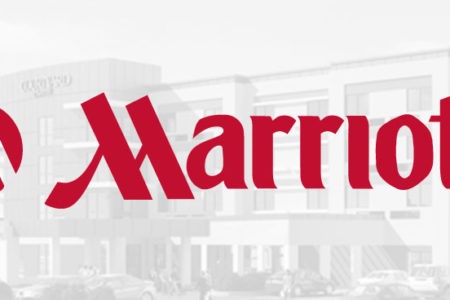High-Rise Design Requirements
High-rise hotels have the potential to increase your guest capacity. In my last newsletter, I explained at what point a hotel becomes classified as a high-rise building. In this newsletter, I present the key design considerations for high-rise structures (i.e., above 75 feet), including egress points, emergency systems, and structural integrity.
EGRESS POINTS:
- Remote Stairway Locations – There must be at least two exit stairways separated by a distance greater than 30’ or at least one-fourth of the maximum overall dimension of the served area.
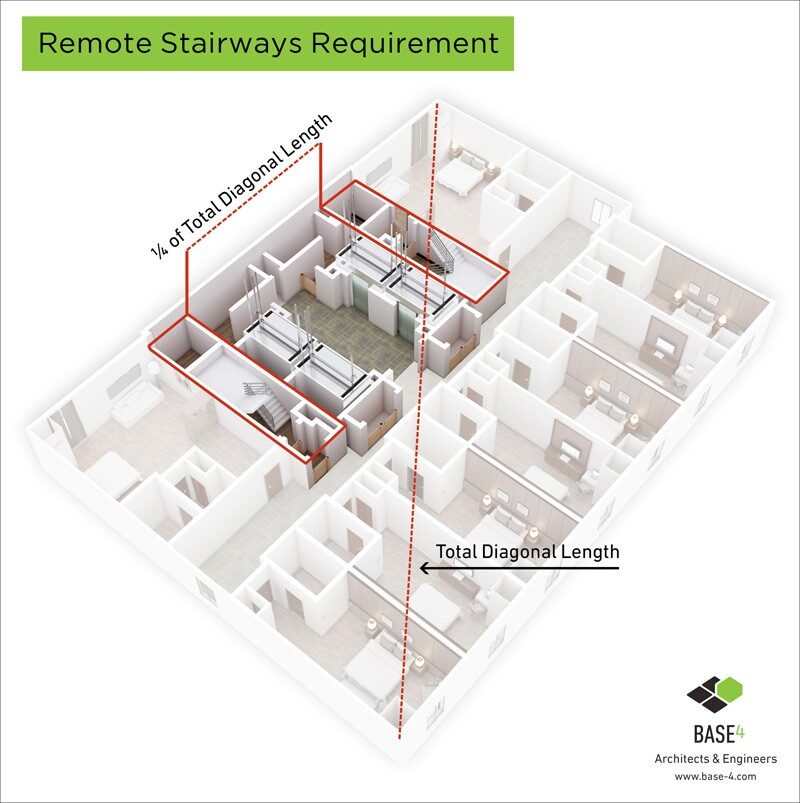
- Egress Patterns – A design pattern must be provided in exit enclosures for all areas, including steps, landings, perimeter separation lines, railings, exit doors, and hardware.
- Fire-Service Requirements – High-rise buildings must have a minimum of two fire-service entrance elevators and include a minimum 150sf elevator lobby and a direct connection to a stairway with a fire hydrant. Please note: This requirement does not apply for building less than 120′ in height.
- Smoke – Stairs for exiting should be designed as smokeproof enclosures, usually requiring a pressurized stair shaft. See the following graphic for clarity:
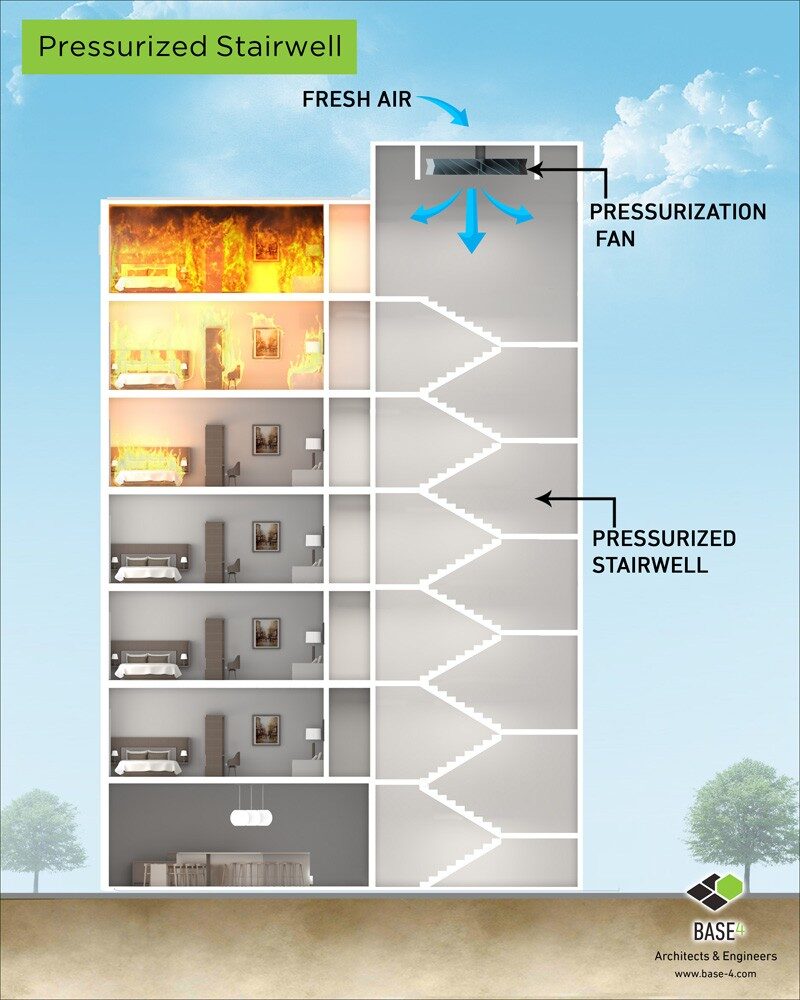 EMERGENCY SYSTEMS:
EMERGENCY SYSTEMS:
- Fire Command Center (FCC) – An FCC is required for all high-rise buildings and must be at least 200sf with minimum widths of 10’ in any direction. The location of the FCC must be approved by the local fire official.
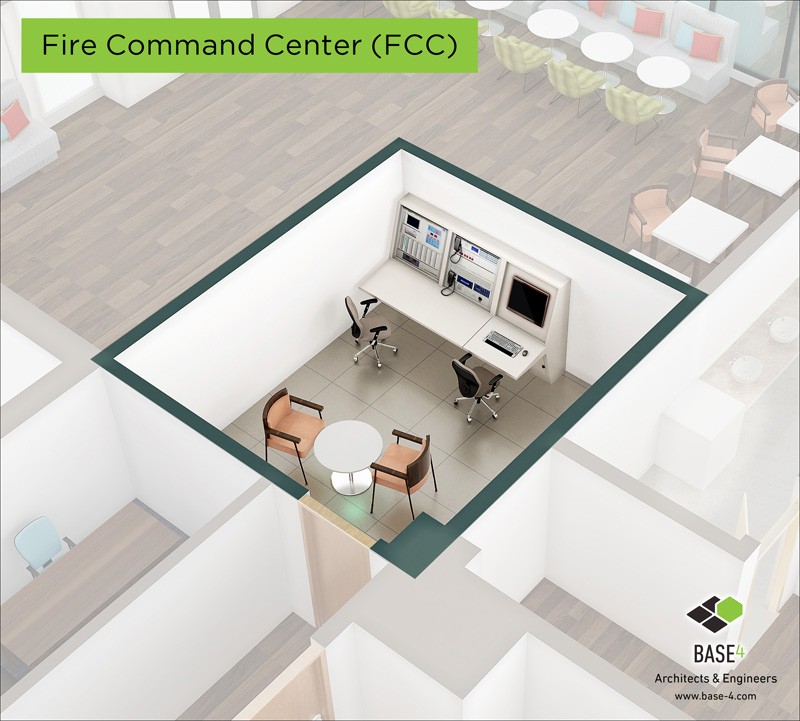
- Alarms – The following four types of communication systems for an emergency are required in all high-rise hotels buildings:
1. Systems for Smoke Detection
2. Voice Alarm
3. Emergency Radio
4. System for Fire Department Communication
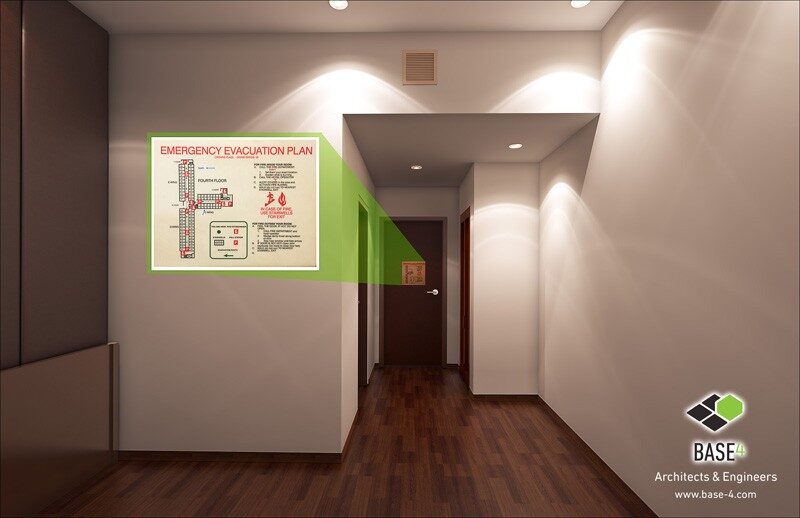
- Fire Pumps Location and Design – Standby power is required for FCC lighting, elevators, power, fire detection equipment, and ventilation—for all housed in smokeproof enclosures. Systems for emergency power require their very own distribution system and are required for egress illumination, elevator car lighting, exit signs, voice/alarm communication systems, automatic systems for fire detection, systems for fire alarm, and electric fire pumps.
- Emergency Systems – Standby power is required for FCC lighting, power, elevators, ventilation, and fire detection equipment—all housed in smokeproof enclosures. Emergency power systems require their own distribution system and are required for exit signs, egress illumination, elevator car lighting, voice/alarm communication systems, automatic fire detection systems, fire alarm systems, and electric fire pumps.
- Smoke Removal – This system expels smoke after a fire event to aid in the recovery efforts. The IBC allows three methods, including manually operated windows or panels, mechanical air equipment, or design-approved engineering. Note: Specialty consultants typically are included for Fire & Life Safety (FLS) services in order to provide design direction on the egress and emergency systems.
STRUCTURAL:
- Structural Integrity – The structural integrity requirements apply to interior stairways and elevators in high-rise buildings for specific at-risk locations. The intent of this requirement is to ensure that elevators and interior stairways stay intact following a significant impact.
High-rise hotels offer both benefits and design considerations. If you’d like to discuss the specific needs of your high-rise hotel project, please don’t hesitate to contact me by email or phone.

Blair Hildahl
Base4 Principal
608.304.5228

